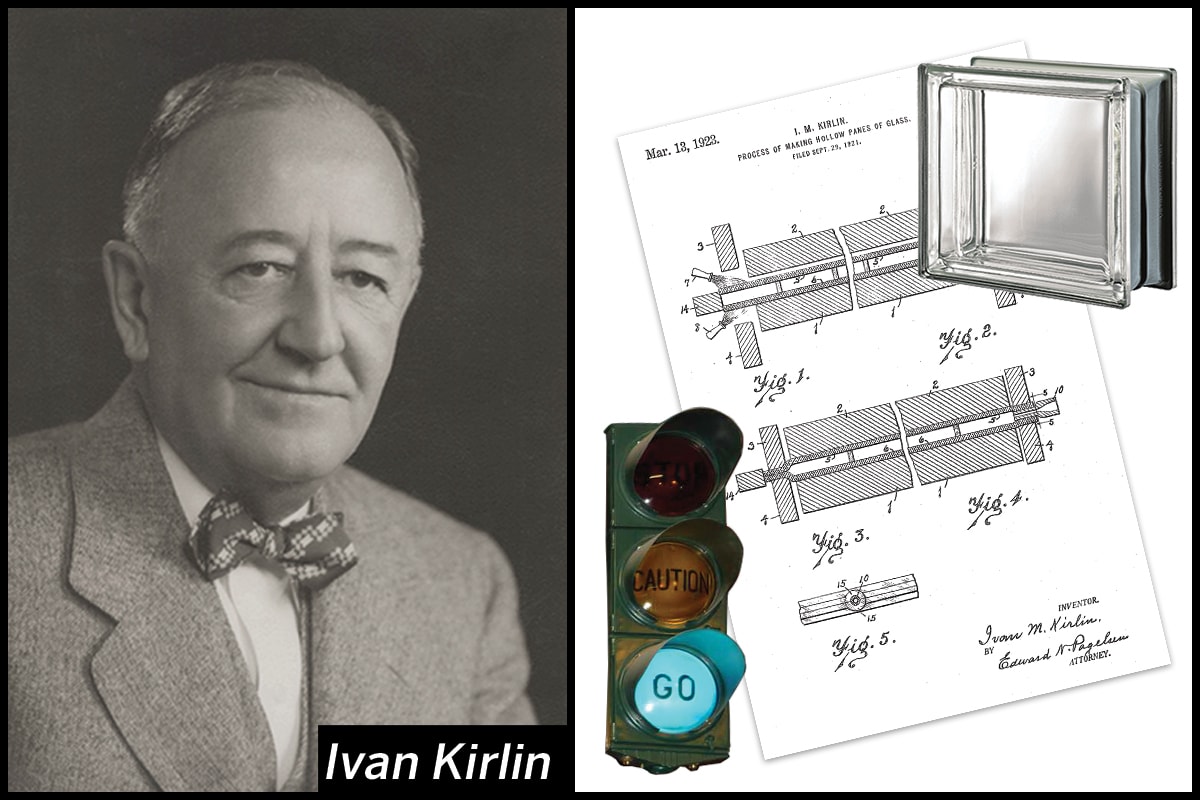For more than a century, The Kirlin Company’s mission has been to lead the lighting industry by designing and manufacturing superior quality, high performance and innovative luminaires. Below is a capsule of its history, including many of the best-known innovations it has produced for the lighting industry.
-
1890’s
In 1895, electrical pioneer Otis Kirlin founded The Kirlin Company in St. Paul, MN. Otis’s first entrepreneurial pursuit was to build electric power plants throughout Minnesota and the Dakotas, bringing the life-changing power of electricity to every home and business in his region. Unfortunately, homeowners and business owners were not yet convinced that the benefits of electricity outweighed the risks.
To combat their fear of this new technology, Otis began developing lighting fixtures that married safe construction techniques (porcelain sockets rather than wood) with aesthetic enhancements (decorative motifs rather than utilitarian designs).

-
1900’s
Throughout the 1900s, Kirlin’s decorative lighting greatly increased residential and institutional demand for electric power, which required long hours of service by Kirlin’s crews, including Otis’s son Ivan, shown here in South Dakota servicing power lines.
Before long, Otis had developed a passion for making light fixtures which far surpassed his love of power distribution. So in the early 1900s he sold his stake in the power plant business to focus on one mission: to design and manufacture the world’s finest luminaires.

-
1910’s
In the early 1910s, Otis’s workshop in Minnesota produced hand-crafted artistic chandeliers using high quality materials from Kirlin’s own brass, bronze, and glass foundries.
By the end of the decade, Otis relocated the company to the city that everyone was talking about: Detroit, MI. The goal of the move was to take advantage of the area’s technology, manufacturing expertise, and skilled labor. At that time, the average cost per Kirlin chandelier was more than the cost of a Cadillac automobile!

-
1920’s
Ivan Kirlin worked for much of the 1920s designing glass lenses and optical reflectors that were sold to manufacturers all across the burgeoning lighting industry, including to his father’s company. Ivan’s innovations were not limited to light fixtures, however, as he created the world’s first glass block and three-color traffic signal during this time.
After working as an engineer for the National X-Ray Reflector Company, Ivan joined his father Otis at Kirlin to continue the family tradition of producing extraordinary lighting products, but bringing his own unique and novel concepts with him.

-
1930’s
Under the leadership of Ivan Kirlin and his plant manager Claude Banks, The Kirlin Company turned its focus from hand-crafted chandeliers to highly tooled, high volume lighting fixture production, incorporating a patented recessed fixture design with attached J-box. The 1208 incandescent line as well as the mercury and fluorescent product lines were developed.

-
1940’s
World War II redirected Kirlin’s work to support the U.S. government’s requirement for wartime products, such as engine parts for the P-51 Mustang fighter planes.
Otis Kirlin, still actively working and inventing for the company, patented the first cruise control system for automobiles, among a host of other patents for air valves, spotlights, mechanical clamps, ladders, and scales.

-
1950’s
The post-war construction boom helped fuel Kirlin’s growth in every lighting market. A nationwide network of distributors was established, and the “flare” series was introduced. Kirlin’s reputation for quality and efficiency (producing 1,500 fixtures per day) was firmly established.
Products from this era are still regularly found in operation in residential, commercial, and institutional structures around the U.S. — recognizable thanks to the iconic “K” at the center of their concentric square lenses.

-
1960’s
John Kirlin assumed leadership of Kirlin in the 1960s, initiating the development of many Kirlin hallmarks, including the WhisperPack™ encapsulated, cool and quiet HID ballast. In addition, Kirlin’s metal halide luminaires made their debut, and Kirlin squares were augmented by a full line of “circulars” — round fixtures that helped to fill out the product line and cater to the market’s changing tastes.

-
1970’s
The Kirlin Company began creating specialized lighting designs for hospitals and penitentiaries. Sophisticated motorized patient examination lighting products were developed, thanks to valuable input from world renowned heart surgeon Dr. Michael DeBakey of the Baylor College of Medicine.
Also, maximum security lighting products made from super tough extruded aluminum housings were introduced. These designs out-foxed even the most cunning inmates.

-
1980’s
Rapid introduction of new source technologies resulted in the development of hundreds of new luminaires through the 1980s. Kirlin was the first to introduce a full line of compact metal halide dual reflector luminaires designed for low wattage E-17 and double-ended lamps.
Kirlin also offered the industry’s most complete compact fluorescent catalog, featuring the first quad lamp luminaires with high power factor ballast systems.

-
1990’s
As Kirlin celebrated its Centennial, innovation and new product development proliferated. The result was a premier product mix designed to fulfill lighting specifiers’ objectives for commercial and institutional lighting. With the patenting of INFRALITE® Remote Controlled Directional Recessed Patient Lighting, Kirlin formed a second operating division, Medical Lighting, and created a dedicated sales force for the market.
Coinciding with the New Millennium Tungsten Halogen and Incandescent catalog launch, Kirlin opened its Reflection Point Lighting Showroom in Detroit. Jana Kirlin Brownell succeeded her father as President and CEO.

-
2000’s
Kirlin began its third century of innovation by developing luminaires centered around two new light sources: high output LEDs and Induction. Incorporating these long-life sources with Kirlin’s sophisticated optical designs created the most efficient and high-performance products Kirlin had ever produced.
The company deepened its expertise in illuminating MRI suites with the launch of SmartLED™, the industry’s first all-LED MRI lighting system with remote mounted power supplies and EMI/RFI filters.

-
2010’s
Through the 2010s, Kirlin continued to lead the industry with advancements in state-of-the-art LED luminaires and turn-key LED lighting systems for architectural and healthcare applications.
Award-winning Symphony™ DMX lighting systems for auditoriums, and INFRALED motorized patient exam and procedure lighting for all medical applications demonstrated Kirlin’s passion for innovation and quality.

-
2020’s
Today, under the leadership of 5th generation family-member Chris Brownell, Kirlin remains focused on designing and manufacturing lighting solutions for the Healthcare and Architectural markets, from our headquarters and factory on Detroit’s east side. Our engineering and product development teams pride themselves on solving the most challenging lighting puzzles that arise in demanding environments.
Kirlin’s consistent innovation has not gone unnoticed, as the IES has recognized the company in each of their annual “progress report” awards this decade: for INFRALED PRO in 2020; IK10-Rated Behavioral Health 2×2 Panels in 2021; MRI-safe RGBW slot (MRL-2) in 2022; MRI-safe RGBW cove and Hitsville task light in 2023; and Ambient+ dynamic two-color luminaires, Strait Secure Slot for behavioral health, and our MRI-safe RGBW downlights in 2024. Additionally, in 2023, INFRALED PRO was named The Coolest Thing Made in Michigan by the Michigan Manufacturer’s Association.
